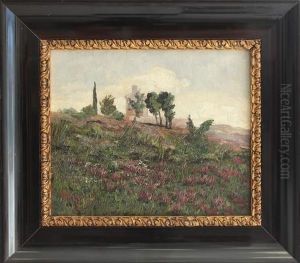Mato Celestin Medovic Paintings
Mato Celestin Medović is one of Croatia's most significant painters, renowned for his contributions to the development of modern Croatian art. Born on December 17, 1857, in Kuna on the Pelješac peninsula, Medović initially embarked on a path quite different from art—he joined the Franciscan monastery at the young age of fourteen. During his time with the Franciscans, he was given the name Celestin.
Medović's artistic talents became apparent early on, and his superiors sent him to study painting in Italy. He studied in Rome and Florence, where he was influenced by the Renaissance masters, as well as by the works of Baroque artists. His early works were primarily religious in nature, fitting for his monastic life, and he painted several works for churches in the Dalmatian area.
However, Medović's deep interest in painting and his desire for a secular life led him to leave the Franciscan order and move to Munich in 1886, which was a major center for art at the time. There, he was exposed to various contemporary artistic movements and styles which greatly influenced his work. He studied at the Royal Academy of Fine Arts in Munich and became particularly skilled in the use of color and light, which became hallmarks of his later work.
Upon returning to Croatia, Medović settled in Zagreb and later moved to his native Pelješac. During this period, he shifted his focus from religious subjects to landscapes and scenes from daily life. He is best known for his panoramic landscapes of the Croatian countryside, which are characterized by luminous skies and the vibrant colors of the Adriatic. His depictions of the simple lives of fishermen and peasants are also notable for their sensitivity and realism.
Medović was a key figure in the transition from traditional to modern art in Croatia. He was a member of the Society of Croatian Artists and contributed significantly to the local art scene. His work was a precursor to the development of Croatian modernism, and he was one of the first Croatian artists to break from the academic style prevalent in the late 19th century, paving the way for future generations of artists.
Mato Celestin Medović's health deteriorated in the latter part of his life, and he spent his final years in poverty and obscurity. He died on January 20, 1920, in Zagreb. Despite the hardships he faced, his legacy lives on, and he is remembered as a pioneer of Croatian art, whose works are celebrated for their vibrant color, light, and compassionate portrayal of rural life.
